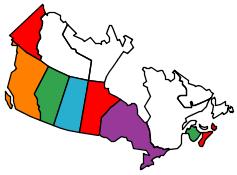
ANCHORAGE, Alaska - One of Alaska's most active volcanoes could be working toward a massive eruption that could affect air travel but was not expected to threaten any of the towns in the area.
Satellite images of Pavlof Volcano taken Thursday showed strong thermal readings, consistent with what the Alaska Volcano Observatory is calling a "vigorous eruption of lava" at the volcano about 590 miles southwest of Anchorage on the Alaska Peninsula.
The volcano is below the path of hundreds of daily international flight paths, and an explosive eruption could interrupt those operations, said a volcano seismologist with the observatory. Volcanic ash can enter an engine and make it seize up, he said.
The Federal Aviation Administration sent advisories to airlines that might be operating in the area and is monitoring the situation. If there is a severe eruption, flights would have to be diverted, possibly resulting in delays.
Seismic activity is high at the 8,262-foot volcano, with about one tremor recorded every minute. Lahars — mudslides caused when lava melts snow on the peak — have triggered some seismic activity, as well, he said.
The mudslides took place on the southeast side of the volcano, an area inhabited by few, if any, people. Pavlof is about nine miles from Pavlof Bay, a popular fishing ground, but at the moment it isn't posing an immediate threat.
Hazards the volcano could present included light ash fall on nearby communities, mud flows, lava flows and hot debris avalanching on the volcano's flanks.
Several small towns are in the area, including King Cove, which is about 35 miles to the southwest with a population of roughly 800, and Cold Bay, nearly 40 miles southwest with a population of about 90. But they're too far to be affected by lava, and an eruption probably would coat the towns with no more than a 2- or 3-millimeter-thick blanket of ash.
Pavlof, which has had about 40 eruptions since record keeping began in the area in the 1760s, is among the most closely monitored volcanoes in the state, with permanent monitoring equipment installed nearby.
Its last eruption was in 1996; that 11-year span is the longest Pavlof has gone without an event. A string of eruptions took place during the 1970s and 1980s.
A series of ash explosions and lava eruptions took place for several months after the last eruption. Ash clouds reached as high as 30,000 feet at the time. During a 1986 eruption, Pavlof spewed ash as high as 49,000 feet.
___









No comments:
Post a Comment